Hose Company No. 4 Firehouse
Introduction
Author-Uploaded Audio
Listen to a narration of this entry's description by Jenevieve Hughes.
Text-to-speech Audio
Images
The Hose Company No. 4 Firehouse Building in Eureka
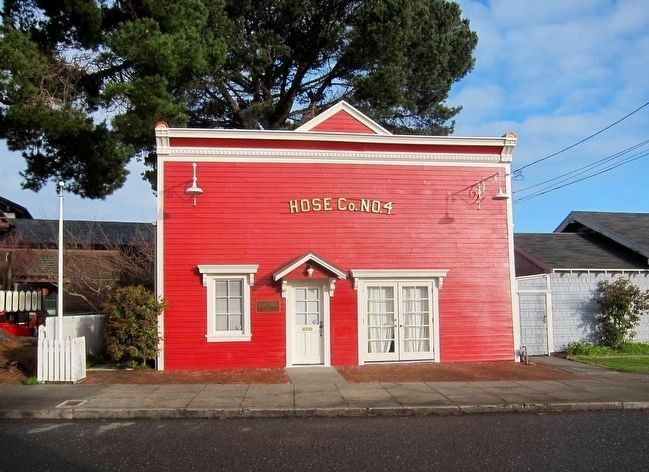
Hose Company No. 4 Firehouse Building showing the large mural on the side of the building
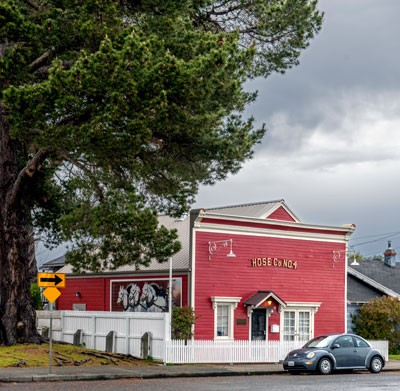
Mural on the exterior wall of the Hose Company No. 4 Firehouse
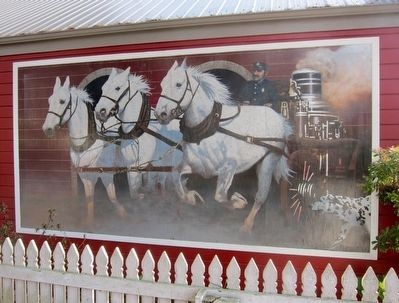
Historical plaque placed on the the Hose Company No. 4 Firehouse building in 1997
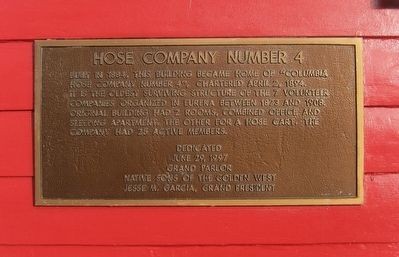
Early photo (c. 1900-1920) showing an example of a horse-drawn fire wagon pulling a steam engine used to pump water
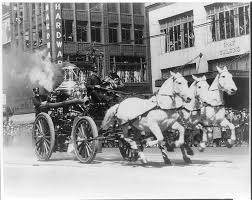
Backstory and Context
Author-Uploaded Audio
Listen to a narration of this entry's description by Jenevieve Hughes.
Text-to-speech Audio
This firehouse was built for the "Columbia Hose Company Number 4," which was established on April 2, 1894. At the time, there were a total of seven volunteer fire companies that were organized in Eureka between the years 1873 and 1908. The Columbia Hose Company Number 4 was among these early companies and its firehouse is the only surviving firehouse in Eureka from this early period. None of the other seven firehouses remain standing today. The Columbia Hose Company Number 4 had 25 active members at the time of its original charter.
The firehouse is a modest wooden structure that was built with only two rooms. One room contained combined sleeping and office quarters. The other room contained space for the fire hose cart, which included a leather fire hose wrapped around a cylindrical reel suspended between a pair of wheels. This bulky, heavy fire hose cart device was initially pulled by hand by a team of men. A few years later, it was replaced by a fire wagon, which was pulled by horse power. In the early days of the firehouse, fire wagons required one or more horses harnessed to the wagon to pull the fire hose along with a steam engine to pump the water.
A large and colorful mural, which was painted on an exterior side wall of the Number 4 firehouse, depicts the era of the horse-drawn fire wagon. The mural was painted on the wood siding by C.R. Spicer in 1995. It is titled, "Fire House Alarm, Horse Drawn Fire Wagon." A historical plaque was also added to the building by the Native Sons of the Golden West on June 29, 1997. It appears just to the left of the front entryway.
Sources
Gabbert, Bill. "Horse-drawn fire engines", Wildfire Today. September 5th 2016. Accessed March 19th 2020. https://wildfiretoday.com/2016/09/05/horse-drawn-fire-engines/.
"Hose Company No. 4", Waymarking. Accessed March 19th 2020. https://www.waymarking.com/waymarks/WMJZPZ_Hose_Company_Number_4_Eureka_California.
"Hose Company Number 4", Noe Hill. March 2nd 2018. Accessed March 19th 2020. https://noehill.com/humboldt/poi_hose_company_number_4.asp.
"Mural Tour - Eureka", Visit Redwoods. Accessed March 19th 2020. https://www.visitredwoods.com/listing/mural-tour-eureka/48/.
Ruppenstein, Andrew . "Hose Company Number 4", Historical Marker Database. June 16th 2016. Accessed March 19th 2020. https://www.hmdb.org/m.asp?m=91922.
Smith, Dennis. "A History of Horses in the Fire Service", Fire History. Accessed March 19th 2020. http://firehistory.weebly.com/a-history-of-horses-in-the-fire-service.html.
Andrew Ruppenstein,
Noe Hill
Andrew Ruppenstein, Historical Marker Database
Andrew Ruppenstein, Historical Marker Database
Library of Congress
